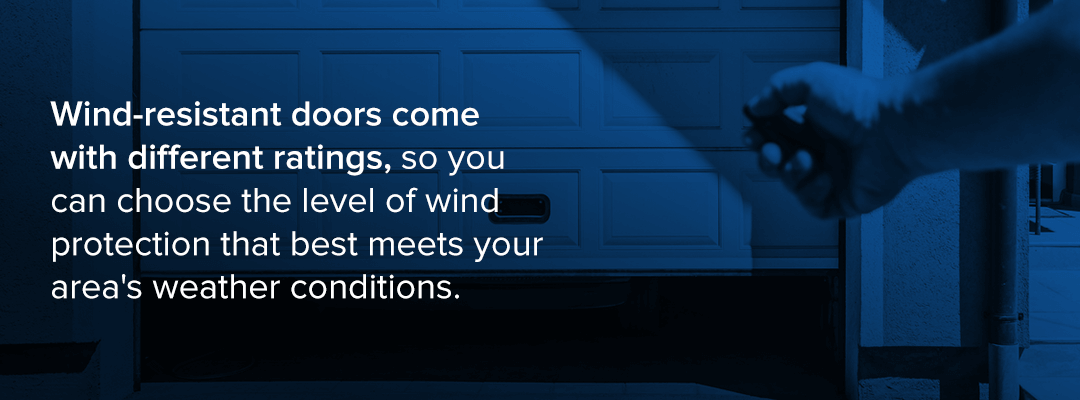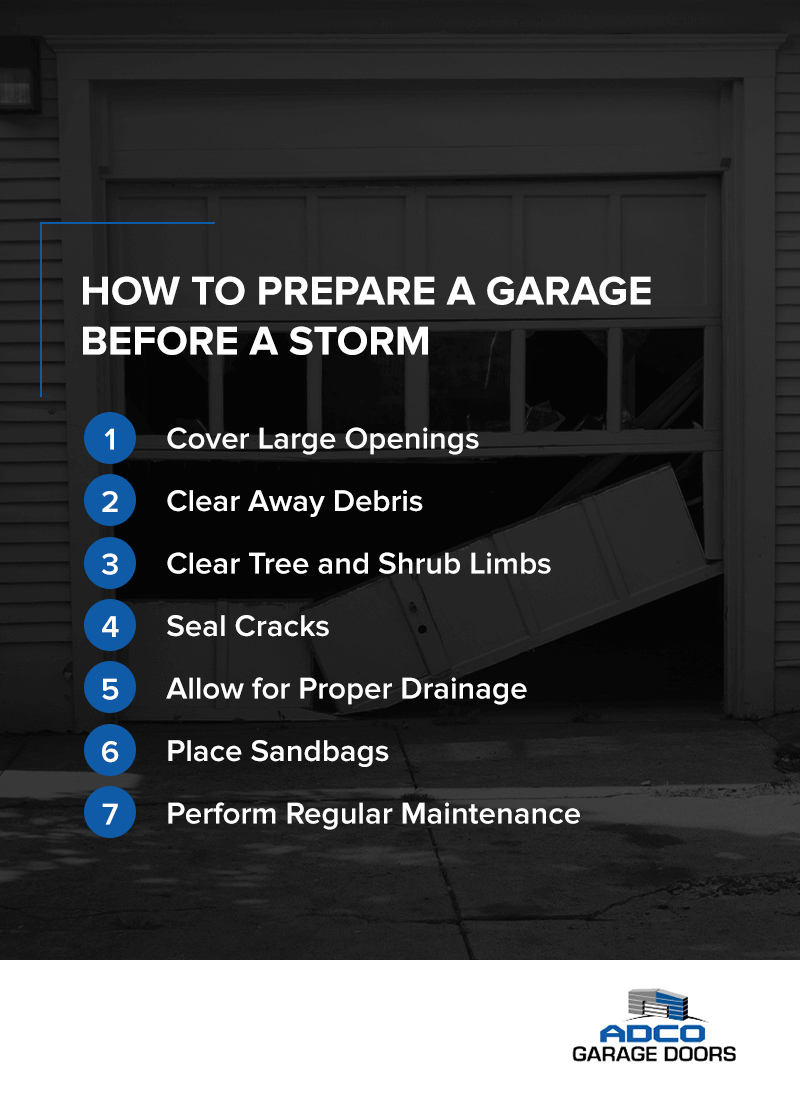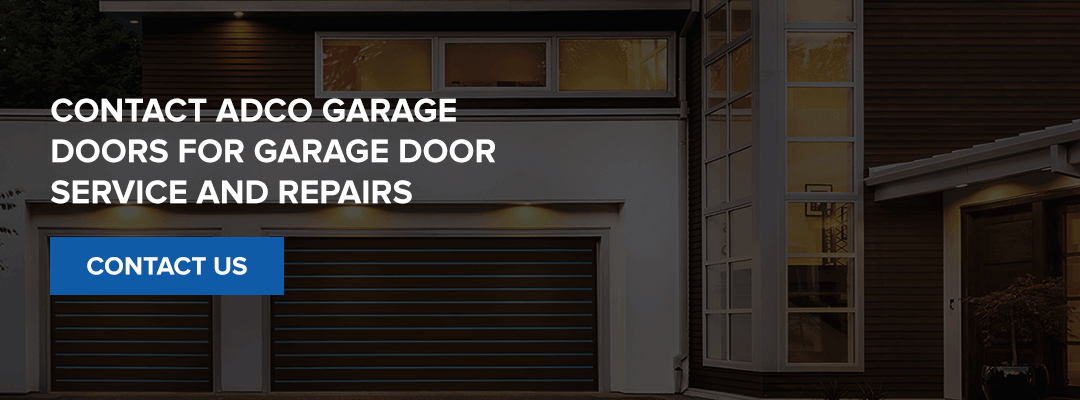How to Prepare Your Garage for a Hurricane
How to Prepare Your Garage for a Hurricane
If you’ve just moved to Florida, you need to be prepared for hurricanes. Tropical storms and hurricanes are facts of life in the state, so many residents have extensive experience in boarding up their windows, stocking up on food and water, and hunkering down or leaving town to ride out the storm.
When hurricanes hit, they cause tremendous damage, accounting for wind and flooding damage totaling about $54 billion a year in the United States. That’s $34 billion in direct losses to households, as well as $9 billion in losses to commercial businesses and the rest in losses to the public sector.
Learn More About Hurricane Impact Doors
Because of that high potential for damage, you need reliable ways to fortify your home or business and its garage. You’ll want to figure out how to prepare your garage for storms or obtain a hurricane-proof garage door that can withstand battering winds and rain.
Tropical Storms and Hurricanes Explained
How do tropical storms and hurricanes work, and what threats do they pose to your garage?
Tropical Storms
Over the tropical ocean, a sustained low-pressure system sometimes develops. It often has several key characteristics:
- Absence of a weather front
- A well-defined center
- Localized wind circulation
- Organized deep convection — that is, extreme vertical air movement in response to differences in atmospheric temperatures
- Formation over water with a temperature of 80 degrees Fahrenheit or higher
The low-pressure system develops because the warm tropical waters provide abundant energy. They allow for extensive evaporation, which forms a large mass of moist air. Then winds coming together at the ocean’s surface force that air upward. The rising humid air cools as it ascends, and it condenses into a mass of clouds.
Low-velocity winds above this air mass blow outward, allowing even more warm, humid air to rise without dissipating the developing energy. Then winds from outside the system combine with it and steer it, allowing it to move and grow. In this way, the low-pressure system forms into a storm that causes wind and rain as it travels across the ocean.
If the winds reach sustained speeds of 38 to 73 miles per hour, the storm becomes a tropical storm. Intense tropical storms bring high winds and heavy rainfall that can cause damage if the storm makes landfall.
Hurricanes
If the winds in a tropical storm reach sustained velocities of 74 miles per hour, the storm becomes a hurricane. Meteorologists use the Saffir-Simpson hurricane wind scale to classify hurricanes into five categories based on their wind speeds.
- Category 1: A Category 1 hurricane has wind speeds of 74 to 95 miles per hour. It generates dangerous winds that can do some damage, such as snapping large branches, toppling power lines and compromising roofs and gutters.
- Category 2: A Category 2 hurricane has wind speeds of 96 to 110 miles per hour. It generates hazardous winds that can do extensive damage, including causing major roof damage, uprooting small trees and causing widespread power loss in affected areas.
- Category 3: A Category 3 hurricane has wind speeds of 111 to 129 miles per hour. It can cause devastating damage, including removing roofs from homes and businesses, snapping and uprooting trees and causing power and water outages of several days.
- Category 4: A Category 4 hurricane has wind speeds of 130 to 156 miles per hour. It can inflict catastrophic damage, including ripping apart roofs and walls, snapping and uprooting trees, and causing outages that last for weeks or months.
- Category 5: A Category 5 hurricane has wind speeds of 157 miles per hour or higher. It can inflict catastrophic damage, including destroying homes and businesses, ripping up trees and causing power outages of weeks or months. A Category 4 or 5 hurricane often renders the affected area nearly uninhabitable until cleanup is complete.
The storm category does not necessarily predict the extent of a hurricane’s damage. A slower-moving storm with lower wind speeds can often wreak as much havoc as a faster-moving storm with high wind speeds. A slower storm spends more time in one place, which means its winds have time to do more damage, even if they never hit top velocities.
The wind-generated storm surge also often produces the majority of a hurricane’s harm. The National Hurricane Center, part of the U.S. National Oceanic and Atmospheric Administration (NOAA), reports that storm surge is often responsible for the largest share of life and property loss during a hurricane. Storm surge occurs when a hurricane’s cyclonic winds push water toward the shore, raising the local ocean height above its natural level and sending feet of water flooding inland.
In a typical three-year span, five hurricanes make landfall in the United States. Two of those storms are generally major hurricanes — Category 3 or above.
Impacts of Hurricanes and Tropical Storms on Garage Doors
When a 300-mile-wide hurricane strikes, your garage is likely to be vulnerable. In most homes, the garage is by far the largest opening. If your garage holds two or three vehicles, it likely contains thousands of cubic feet of space.
Your garage takes a pounding from heavy winds and rain. And if the walls are flimsy, the windows break or the door lacks proper reinforcement, a strong gust of wind could quickly rip this large space open.
Doors or windows failing is known as a building envelope breach, which happens when air pressure builds up inside. The force of that air pressure can easily compromise the structural integrity of the rest of your home or business. The pressure created as the wind howls through your garage could collapse walls or blow the roof into the air.
If your garage door sustains damage and stormwaters begin filling your garage, the flooding can also cause you massive headaches, even if the water level is minimal. Standing water in your garage can crumble your drywall and ruin your personal belongings. And if water that enters your garage breaches your foundation, it can put the structural integrity of your whole home or business at risk.
Hurricanes, Tropical Storms and Florida Wind Code Regulations
Florida wind code regulations are part of the Florida building code. They specify the wind speeds that new buildings and components, including garage doors, must be able to withstand.
Along the extreme southern coast of Florida, buildings must withstand wind speeds of 170 to 180 miles per hour, depending on the exact location. This requirement includes all of Broward and Miami-Dade counties, both of which lie in the High-Velocity Hurricane Zone (HVHZ). Areas farther north or farther inland have lower wind code requirements because hurricanes tend to lose speed and strength as they move north and inland over Florida.
If you see wind ratings of 100 to 150 on garage doors, these numbers often refer to the wind code. Certain garage door manufacturers, such as Clopay, use their own rating systems that account for factors like the wind code, construction, neighborhood characteristics and the building’s proximity to water.
Best Way to Secure a Garage Door Against a Hurricane
How can you secure your garage door against a raging hurricane? Below are a few steps you can take to bolster your door’s security and give yourself a little extra peace of mind.
1. Attach Braces
Garage doors are often designed for maximum convenience. They frequently contain fiberglass or thin, lightweight sheet metal so they are easy to raise and lower. However, these materials are often too flimsy to withstand the force of a major storm.
How can you secure your garage door during a hurricane? If you have door braces on hand, you can use them to reinforce the door even as the storm roars outside. A bracing kit typically contains long steel or aluminum bars that you can attach to add strength and wind resistance. They help prevent gale-force winds from breaking your garage door apart, and they are cheaper than purchasing a new hurricane-rated door.
However, bracings cannot always effectively secure older, flimsier doors. If you have a lightweight garage door, it could still sustain storm damage even with garage door braces attached.
2. Invest in a Wind-Resistant Door
If you’re open to getting a brand-new garage door, consider investing in a wind-resistant door.
Gale-force winds put tremendous stress on a door’s parts and joints. In 130-mile-an-hour winds, for example, a single-car, 10-foot-by-10-foot garage door sustains over 6,000 pounds of wind pressure. The heavy-duty, reinforced construction of a wind-resistant door enables it to withstand those stresses. Wind-resistant doors come with different ratings, so you can choose the level of wind protection that best meets your area’s weather conditions.
3. Invest in an Impact-Resistant Door
Hurricane impact doors take that level of protection a step further. An impact-resistant door can withstand the force of common airborne debris along with high winds.
If you live in a coastal area where hurricanes tend to strike with their full force, you’ll almost certainly need an impact-resistant door to give your garage sufficient storm protection. To get the best fit for your home or business and the storms you experience, talk to a garage door professional who can walk you through different features and help you find the door that meets your security and budgetary requirements.
Contact Us For More Information
How to Prepare a Garage Before a Storm
Advance hurricane preparation for your garage is essential for giving your garage the protection it needs to withstand fierce winds and rain. Below are a few tips for hurricane-proofing your garage door and garage before the storm:
1. Cover Large Openings
The first step you’ll need to take is to cover large openings in your garage. Close your garage door, and use plywood to board up your garage door windows if it has them. Make sure the mounting areas and tracks of your garage door are in good condition so they can hold the door securely closed.
2. Clear Away Debris
You should also clear away any debris around your garage. Loose debris could become airborne during the storm and slam into your garage door. If you see any nearby loose wood, trash can lids, kids’ toys, dog bowls or other items that could turn into projectiles in high winds, be sure to move them to a protected area before the storm hits.
3. Clear Tree and Shrub Limbs
Clear tree and shrub limbs away from your garage door as well. Tree limbs are a lot heavier than they look as they extend elegantly into the sky. They can easily become missiles that tear holes in your garage walls or door and let wind, rain and stormwater come crashing through. And even smaller pieces of shrubbery can damage your garage if they crash into it at high speed. Make sure you clear away tree and yard debris to avoid preventable damage.
4. Seal Cracks
Sealing cracks in your garage before the storm hits is critical. Even tiny cracks in the walls or between the garage door and wall can admit floodwater. According to the U.S. Federal Emergency Management Agency (FEMA), just 1 inch of water can do as much as $26,000 worth of home and personal property damage. And rising floodwater levels increase the likelihood of electrical compromise and the risk of electric shock or fires. Sealing those cracks with caulk or weatherstripping enables you to keep water out of your garage to prevent flooding and damage.
5. Allow for Proper Drainage
Your garage probably isn’t the first place in your home or business that comes to mind when you think of providing adequate drainage. However, proper drainage is vital for keeping your garage free from standing water. If your gutters back up during the storm, the pooled water could leak into your garage and cause significant damage. And if water pools in your yard instead of running off into the street, it could seep into your garage through tiny crevices. Consider installing a French drain in that case to minimize the likelihood of standing water.
6. Place Sandbags
One step you can take for keeping stormwater out of your garage is to protect vulnerable areas with sandbags. If your garage has cracks or you notice gaps where the bottom of the garage door doesn’t quite fit against the ground, use sandbags to shore up those areas. Because they are heavy and dense and contain a water-resistant covering, sandbags resist water flow and protect your garage from flooding.
7. Perform Regular Maintenance
Even before taking the steps above, you can provide hurricane safety for your garage door by ensuring that it receives the necessary service. Most garage doors require a little maintenance for proper operation. Getting annual service for your garage door — replacing worn components of the mounting area and tracks, for instance — allows you to make sure your door is ready for any weather-related surprises.
Contact ADCO Garage Doors for Garage Door Service and Repairs
To strengthen your garage in preparation for hurricane season, make ADCO Garage Doors your trusted service provider.
We are southern Florida’s largest residential garage door dealer, and we have years of in-depth experience with garage door installation and repair services, especially in Miami-Dade and Broward counties. We also offer an extensive catalog of commercial and residential hurricane-safe garage doors and are proud to be a full-service dealer for Liftmaster and a Master Authorized Dealer for Clopay.
We have the skills and expertise to get the job done right, and we stand behind what we do. Our friendly customer service, installation and repair teams are happy to talk to you about making your garage safer with door maintenance or an upgrade.
Contact us today to schedule service or learn more.






